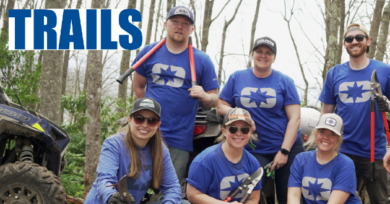March 8, 2010: Triumph N.A. CEO: ‘I do believe the market has hit bottom’
Powersports Business delved into some of the major points Triumph made during its recent dealer meeting with Triumph North America CEO Mark Kennedy. Kennedy not only discussed the reasons behind the company’s optimism for 2010, but also how a new program the company started in conjunction with its launch of the Thunderbird will affect this year’s sales. The program, called Thunderbird 360, was held in January in San Diego and included nearly 70 sales personnel from Triumph dealerships.
Powersports Business: What’s behind Triumph’s expectations for a single-digit sales growth in 2010 over 2009? Is the optimism based on your new models and specifically entering a new segment with the Thunderbird? Or is it more an overall confidence in the rebound of North American motorcycle sales?

Kennedy: I would say it’s a little bit of both. Apart from February, which I believe will be an anomaly due to the weather, I do believe the motorcycle market has hit the bottom. We had some sales growth in December. The market was down 34 percent in January, but we were only down 17 percent. If the market starts to recover through the spring, we would’ve hit our bottom and then we have the Thunderbird on top of that.
PSB: The industry as a whole suffered as a result of retail lending difficulties last year. How much of an issue was that for Triumph?
Kennedy: We always have been quite lucky with (our retail lending partner) FreedomRoad, who were very good and hungry for business in 2009. Our portfolio of customers is quite strong in terms of demographics and earnings. It’s less risky. On top of that, our actual financed motorcycles ratio to purchased motorcycles is quite low compared to the other manufacturers due to those same reasons. So we weren’t affected as much as some of the others.
PSB: Although the Thunderbird is about to enter its first summer in the U.S. market this year, you did get to see what kind of consumers it attracted last winter. Were there any surprises?
Kennedy: Not really. We expected a migration of our American Speedmaster customers and that was the case in a lot of instances. We expected to conquest some of the Japanese cruiser segment and that was quite evident. It’s difficult to measure because of how difficult the market was when he launched the product. There’s also an education factor for our dealer network, which is made up of a large percentage of European brands. We launched the Thunderbird sales program because we knew we had to help and support dealers to know and understand the cruiser customer. So that’s some of the challenges we’ve been working on to make sure the Thunderbird has a successful 2010.
PSB: Most of the strongest motorcycle brands fared well last year in terms of gaining market share, which is not unusual in a down economy. How confident are you that Triumph will be able to hold on to the market share it captured in 2009?
Kennedy: The thing about market share for Triumph and a lot of the smaller manufacturers is there are many products in the market that we don’t compete with, either on engine platform, cubic capacity or price. So we stay strong in the segments that we’re in, but if the market grows in those segments we’re not in, than it’s very difficult to hang on (to market share). On the other hand, we’ve gained market share for a couple of reasons. One is the product is great, and getting better and better. Secondly, we’re really working with our dealers. We’re taking on some really good dealers, and we’re helping the dealers we have.
PSB: What made Triumph decide to focus more on grassroots marketing for 2010 than try to attend more national events?
Kennedy: We’re still a relatively small company compared to the bigger manufacturers. We felt that our money would be better spent focused on the consumers that are already in the purchase mode and make sure that we have a strong message at the dealer level, the local level. We felt in these tough economic times that was a challenge we could take on and do very well at, rather than doing large, national expensive campaigns. We know that when we take our demo truck in, we get sales that weekend from customers who have rode the bikes. The percentage of sales from the test rides at the dealer level is five times that of a national event. The conversation rate of sales is five times greater. That’s why we invested in the second truck so now we can have 80 events a year rather than 40 at dealerships. And the biggest challenge that dealers have is driving traffic to the dealerships. What better way to do that than have the OEM-branded truck there with every single model we offer?








